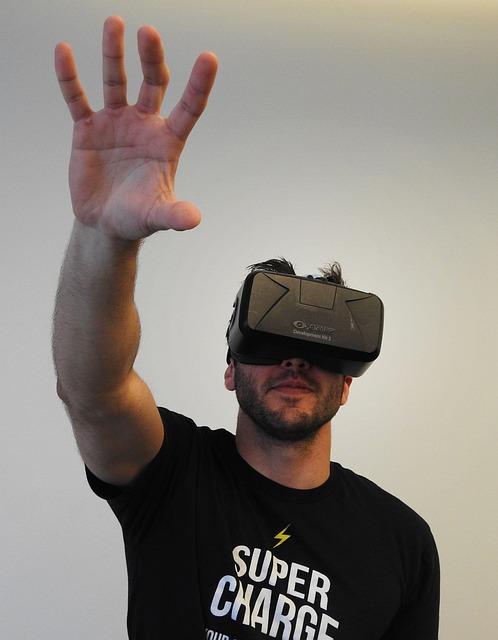In the modern world, wearable technology is rapidly becoming a mainstream technology. There are many companies out there that are making significant progress in developing new products and technologies that are designed to help people stay healthy, feel confident, and accomplish more. Many of these products are already available online and in retail stores.
The latest research reveals that technology can give us the upper hand regarding our health. By integrating wearable devices into our daily routines, we can help ourselves prevent diseases or monitor our symptoms. However, these wearable devices come with a cost. There’s no doubt that you can save time by monitoring your health. Yet, it is still unclear whether wearable devices lead to long-term benefits in terms of quality of life or mortality.
If you’re looking for an excellent wearable tech idea for your next business venture or just want to know which one to get to wear for your next casino hopping, like at casinotoplists, for example, then it’s time to break away from the norm!
Wearables offer a great way to track and understand human behavior in previously impossible ways. The opportunities to get the most out of wearables are only increasing as technology becomes more affordable and capable.
This article will show what wearable technology can offer people today.
Good Things Wearable Tech Can Offer
There are currently many advantages to wearable technology, such as keeping track of your daily activities and being reminded of upcoming appointments. Examining the benefits of wearable technology, we find:
1. Wearable Technologies Help Improve Health Care
When it comes to monitoring your health, wearable technology is helpful for people of all ages and sexes.
Specific healthcare wearable technology is available in addition to the many features that come standard on some wearable electronics, such as monitoring heart rate, stress, and sleep.
Wearable heart rate monitors may help track symptoms like irregular heart rate if you’re worried about your heart’s health and want your doctor to be informed about any changes you notice. If necessary, you can even get wearable technology implanted in your heart. Implantable cardioverter defibrillators (ICDs) and pacemakers are medical devices used to monitor and control heart rate and potentially reactivate a malfunctioning heart.
Some chronic conditions have prompted the development of wearable technology to aid patients. Some devices, for instance, can monitor individuals with Parkinson’s disease between doctor visits. Wearable devices, similar to wristwatches, collect and transmit data that specialists then analyze to determine the best course of treatment for each individual with Parkinson’s disease. Additionally, they can remind their owners when it is time to take their medication.
Always consult a medical expert before deciding that your health issues are best monitored using technology.
2. It’s Simple to Operate
Although wearable technology prototypes have been for decades, device integration is now considerably simpler. They’re more streamlined, intelligent, and comfy than ever before. And most gadgets can be set up quickly and easily, whether you want to use them in tandem with your smartphone or on their own. Practical portability and streamlined operation are features shared by most wearable technologies.
3. Ideal and Beneficial for the Elderly
Getting older raises the prospect of health problems and the probability of falls. Worrying about a family member’s well-being when they live alone is typical. Wearable technology may be helpful for the elderly and other persons living alone because it allows them to do more things on their own and provides their loved ones with peace of mind that they can get help fast if they need it.
One example of a wearable that could be useful for the elderly and the disabled is a medical alert system that includes fall detection and can automatically call for aid.
Most modern smartwatches include alarm clocks and the ability to set reminders with voice commands, making it easy to track critical times like medicine administration. Devices with larger screens and easy-to-use controls are also available for those with limited vision or manual dexterity.
4. It’s a Productivity Booster
Wearable gear may be the key to unlocking your full potential in the workplace. There is much time to be saved by using voice commands for tasks like making lists, setting reminders, and dictating notes.
By allowing you to check your schedule with a glance at your wearable, rather than pulling out your phone or logging into a desktop program, wearables help to improve communication and decrease distractions. You should be able to customize the types of alerts you receive from your wearable technology to reduce disturbances further.
5. Motivates You To Be Fit in Your Workplace or At Home
Wearables are an excellent tool for keeping track of your fitness progress and overall health. Your wearable device’s statistics can motivate you and your coworkers to get more exercise through friendly competition. Many businesses provide wellness programs that you can use to track your progress. Without a gym at the office, you can use exercise applications to compete with your coworkers, friends, and family.
6. It Supports Safe Working Practices
Workplace safety can be improved with wearable technology, which can keep track of employee fatigue levels and alert you when it’s time to take a break.
Wearable electronics such as heads-up displays integrated into safety glasses and sensor-equipped hard hats are also available as “smart” PPE. Workers can look out for each other’s health and safety.
